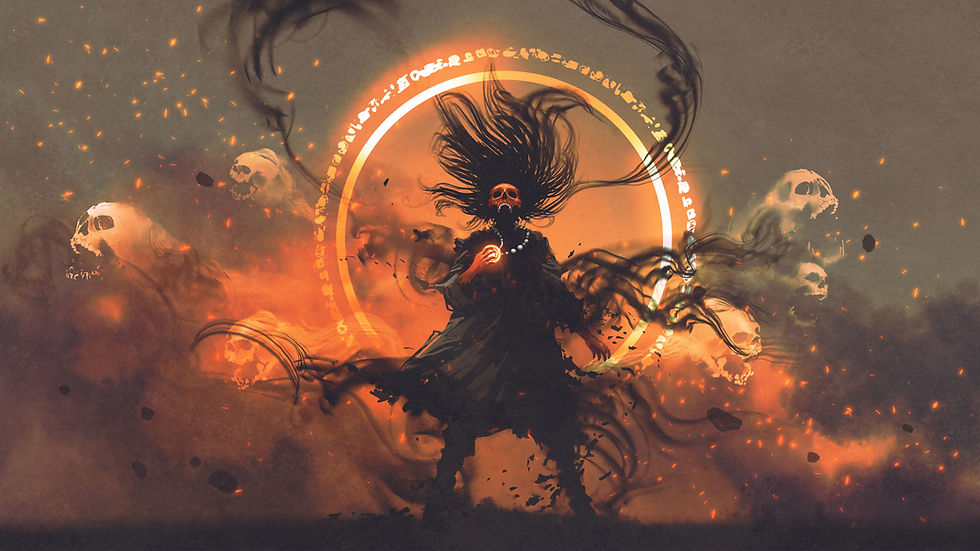

अघोर का वास्तविक अर्थ
True Meaning of Aghor

“अघोर” शब्द संस्कृत में “जहाँ घोरता (भय, द्वेष, अंध�कार) न हो” से बना है। अघोर दर्शन यह सिखाता है कि सृष्टि में कुछ भी अपवित्र नहीं है—हर वस्तु, हर अनुभव, हर परिस्थिति ईश्वर की अभिव्यक्ति है।
अघोर साधक जीवन और मृत्यु, सुख और दुःख, पाप और पुण्य—इन सभी द्वंद्वों से ऊपर उठने की साधना करता है। उसके लिए सब कुछ एक समान है, क्योंकि वह जानता है कि सारा खेल चेतना का है और वास्तविकता में सब शून्य (void) है।
The word Aghor comes from Sanskrit, meaning “that which is beyond fear or darkness.”
Aghor philosophy teaches that nothing in existence is impure—every object, experience, or emotion is simply an expression of the Divine.
An Aghori sees no separation between life and death, good and evil, sweet and bitter. For him, everything is void (Shunyata), and everything flows by the will of the Supreme.
अघोर साधना क्या है? (What is Aghori Sadhana)
अघोर साधना वह मार्ग है जिसमें साधक अपनी चेतना को सीमित अहंकार से मुक्त करता है। यह साधना किसी भय या तामसिक प्रवृत्ति का प्रतीक नहीं, बल्कि आत्म-साक्षात्कार की प्रक्रिया है।
साधक का लक्ष्य यह नहीं होता कि वह किसी चमत्कार को सिद्ध करे, बल्कि यह होता है कि वह अपने भीतर के सभी भेदभाव मिटा दे — अच्छा-बुरा, पवित्र-अपवित्र, मीठा-कड़वा, सब एक समान लगे। यही “अघोर-भाव” कहलाता है।
Aghori Sadhana is not a dark or violent practice as many believe—it is a deep spiritual discipline aimed at complete self-realization.
The purpose of this path is not to perform miracles or gain powers, but to transcend duality and dissolve all inner conflicts.
A true Aghori sees the sacred in the profane, the divine in the dreadful, and the eternal in the temporary.
He recognizes that heaven and hell, purity and impurity, are only mental concepts created by limited human perception.
अघोरी साधनाओं के प्रमुख प्रकार (Main Aghori Sadhanas)
-
श्मशान साधना (Shamshan Sadhana) –
यह सबसे प्रसिद्ध और गूढ़ साधना है। श्मशान में साधक मृत्यु और अनित्यत्व का साक्षात्कार करता है। अग्नि, भस्म और खोपड़ी यहाँ केवल प्रतीक हैं — यह दर्शाते हैं कि शरीर नश्वर है और चेतना अमर। -
कपाल साधना (Kapal Sadhana) –
इसमें साधक खोपड़ी (कपाल) को ध्यान और तांत्रिक क्रियाओं के लिए माध्यम बनाता है। यह मनुष्य के भीतर बसे भय को समाप्त करने और आत्म-वास्तविकता का अनुभव कराने का साधन है। -
भैरव साधना (Bhairava Sadhana) –
इसमें साधक भैरव तत्व का ध्यान करता है, जो शिव का उग्र रूप है — यह साधना साधक को निर्भय, निडर और जागृत बनाती है। -
काली या अघोर काली साधना (Aghor Kali Sadhana) –a
इसमें साधक “काली” के अघोर रूप का ध्यान करता है। यह साधना पूर्ण समर्पण और अहंकार-त्याग की मांग करती है। साधक जब काली-तत्व में विलीन होता है, तो उसे “निर्विकल्प शांति” प्राप्त होती है। -
पंच-मकार साधना (Pancha-Makara Sadhana) –
यह अघोर और वाममार्ग तंत्र की प्राचीन विधि है। यहाँ ‘मद्य, मांस, मत्स्य, मुद्रा और मैथुन’ को बाह्य रूप में नहीं, बल्कि आंतरिक प्रतीकों के रूप में लिया जाता है — जैसे कामना पर विजय, आसक्ति पर नियंत्रण और अहंकार का विसर्जन।za
-
Shamshan Sadhana (Cremation Ground Practice)
-
This is one of the most ancient and secretive Aghori paths.
The cremation ground symbolizes impermanence; it reminds the practitioner that all forms dissolve into ash.
The skull, trident, and sacred ash are symbols of detachment, not fear. Through them, the Aghori learns to conquer the illusion of death. -
2. Kapal Sadhana (Skull Meditation)
-
The skull here is used as a tool of deep meditation.
It represents the emptiness of the mind and helps the practitioner face his deepest fears, realizing that life and death are but two sides of the same reality. -
3. Bhairava Sadhana (Worship of the Fierce Aspect of Shiva)
-
Bhairava represents the fearless aspect of Shiva.
By meditating on Bhairava, the Aghori becomes free from hesitation, attachment, and inner weakness. It cultivates absolute courage and awareness. -
4. Aghor Kali Sadhana
-
This practice is centered on Goddess Kali in her Aghor or transcendent form.
The practitioner surrenders all ego, embracing the truth that everything—including destruction—is part of divine play (Lila). Through this devotion, one experiences nirvikalpa shanti, the stillness beyond thought. -
5. Pancha-Makara Sadhana (The Five M’s of Tantric Path)
-
Often misunderstood, this path uses five symbols—Madya, Mamsa, Matsya, Mudra, and Maithuna—to represent inner purification rather than literal acts.
Each element symbolizes mastery over desire, ego, and the senses, transforming worldly impulses into spiritual awareness.
अघोरी साधक की अवस्था (State of an Aghori Sadhu)
-
एक सच्चा अघोरी साधक न तो समाज से दूर भागता है, न ही किसी दिखावे में विश्वास रखता है।
वह अपने भीतर उस अवस्था को साधता है जहाँ – -
कोई भय नहीं रहता,
-
कोई मोह नहीं रहता,
-
कोई भेद नहीं रहता,
-
और जीवन-मृत्यु एक समान प्रतीत होते हैं।
-
उसकी चेतना “साक्षी” बन जाती है — वह देखता है कि जो कुछ हो रहा है, सब उसी ब्रह्म की लीला है।
इस अवस्था में साधक को न तो स्वर्ग चाहिए, न मोक्ष, न चमत्कार। उसे केवल “स्व” की अनुभूति चाहिए — जो अनंत, निर्गुण और सर्वव्यापी है।
-
A true Aghori is neither antisocial nor violent.
He lives in a state of complete surrender and equilibrium, where: -
There is no fear,
-
No attachment,
-
No distinction between joy and sorrow,
-
And no separation between life and death.
-
In this state, the Aghori becomes a witness (Sakshi) to the divine play.
He seeks neither heaven nor liberation; he only seeks to experience the Infinite Self, which is pure, boundless, and ever-present.
